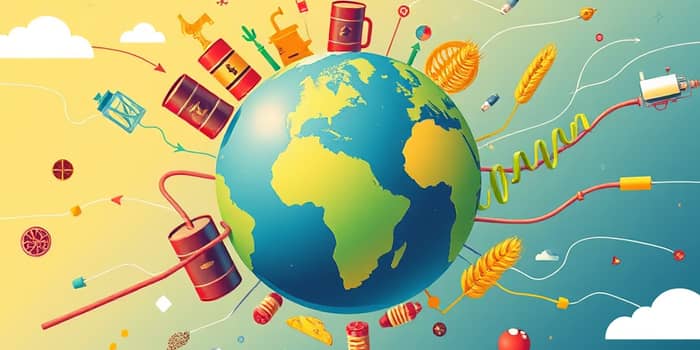
In a world shaped by supply swings, geopolitical shifts, and evolving technology, raw materials remain the lifeblood of global progress. As we look toward 2025 and beyond, understanding the forces at play in commodity markets is essential for producers, investors, and policymakers alike.
After turbulent years marked by pandemic disruptions and policy recalibrations, commodity prices are forecast to head lower in 2025. Analysts point to improved global supplies and a global economic slowdown as primary forces dampening upward pressure.
The energy sector is expected to lead the decline. The World Bank’s energy price index predicts a17% fall in 2025 and a further 6% drop in 2026. Crude oil prices have already eased by 9.7% between August 2024 and March 2025, driven by robust non-OPEC+ output and the unwinding of supply cuts.
Natural gas prices in Europe (TTF benchmark) are projected to average $12.5 per MMBtu in 2025, gradually easing to $7.8 by 2030. Meanwhile, metals and minerals, after a modest 2.5% increase in 2024, are expected to see a slight price ease through 2026. Yet demand remains buoyant for critical metals amid the energy transition.
Agricultural commodity prices are forecast to decline by 1% in 2025 and 3% in 2026. Food staples are generally softening, though cocoa has spiked on weather-impacted poor yields. Grains, coffee, and biofuels remain central to food security and energy diversification strategies.
Multiple forces converge to shape commodity price trajectories. Understanding these drivers can help market participants anticipate shifts and position accordingly.
Precious metals such as gold continue to command a premium amid uncertainty, offering a hedge against market turbulence. Fertilizers remain an outlier, with prices holding firm despite broad declines elsewhere.
Innovation is reshaping how commodities are produced, financed, and traded. Digital platforms and new financial instruments are modernizing sectors from metals to agriculture.
In mining and metals, the use of electronic Letters of Credit and blockchain-based Bills of Exchange is streamlining financing. In agriculture and biofuels, blurring lines between agriculture and energy require fresh collaboration models and working capital solutions.
The energy transition is a powerful catalyst. Demand for battery-grade copper, lithium, and other critical minerals is rising steadily as electric vehicles and renewable infrastructure expand. Meanwhile, AI-driven energy demand—from data centers to computing power—adds a new dimension to natural gas and power markets.
Different regions face distinct opportunities and challenges as global commodity flows adjust.
In emerging markets, localized investments in coffee, cocoa, and other soft commodities help hedge geopolitical risk and secure supply chains.
Whether you are an investor, producer, or policymaker, proactive steps can mitigate risks and seize opportunities in the 2025 outlook:
Staying ahead means tracking nascent trends that could reshape commodity markets:
The 2025 commodity outlook paints a picture of moderation in prices but underscores intensifying competition for critical resources. As markets recalibrate, stakeholders who blend data-driven analysis with strategic flexibility will emerge stronger.
Embrace technology-enabled trading, diversify across sectors and regions, and stay agile in the face of geopolitical and policy shifts. By doing so, you will not only navigate the coming years successfully but also contribute to a resilient and sustainable global supply chain.
In an era defined by transformation, proactive engagement and informed decision-making are your greatest assets. Let this outlook guide your journey as the world of raw materials continues to evolve and inspire.
References













